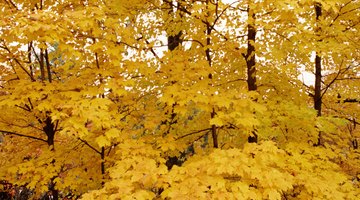Alder Vs. Maple Cabinets
Choosing wood for your kitchen cabinetry is an important decision for any homeowner to make. Cabinets are often the largest visual feature in a kitchen, so the wood used will vastly impact the style and look of the kitchen.

Choosing between two good materials such as maple and alder requires weighing several factors, including price and durability.
Maple - Appearance
Maple is a wood that is a light color when unstained. Clear finishes on maple cabinets allow for a lighter, natural-looking kitchen. However, maple cabinets also take stain quite well, which means that it is also a wood that provides you with flexibility in terms of color choice. The natural color of maple ranges from creamy and yellow hues to those that are much more brown.
Alder - Appearance
Alder is another light-colored wood. It tends to have a more reddish tint than most maple, but many cuts of alder will stay light tan in color. It has a very even and consistent grain, which makes it a good wood for cabinets that are very uniform looking. Like maple, it also accepts stains very well. Alder is sometimes stained to look like more expensive woods such as walnut, but costs a fraction of the rarer hardwoods.
Maple Properties
Maple is relatively inexpensive as far as hardwood goes. While alder doesn't fall into the category of the most expensive hardwoods, maple is certainly somewhat cheaper. Maple is also a very durable wood. This makes it a good choice for kitchens with children or kitchens that are used a great deal, because the maple cabinets will stand up well even under constant use and abuse. Maple is also a good choice for a hardwood painted cabinet.
Alder Properties
Alder is very soft compared to other hardwoods. It will scratch and dent if you bang into it with hard objects. Alder is, however, a very good wood to buy for people who are environmentally conscious. Some trees used in hardwood manufacturing take generations to grow. Alder, on the other hand, grows as much as 6 feet every year. The trees spring to full growth quickly, providing a very renewable source of hardwood lumber.
References
Resources
Writer Bio
Hans Fredrick has been busy in the online writing world since 2005. He has written on diverse topics ranging from career advice for actors to tips for motorcycle maintenance. He holds a Bachelor of Fine Arts from the University of Saskatchewan.
Photo Credits
- Jupiterimages/Photos.com/Getty Images
- Jupiterimages/Photos.com/Getty Images
More Articles



